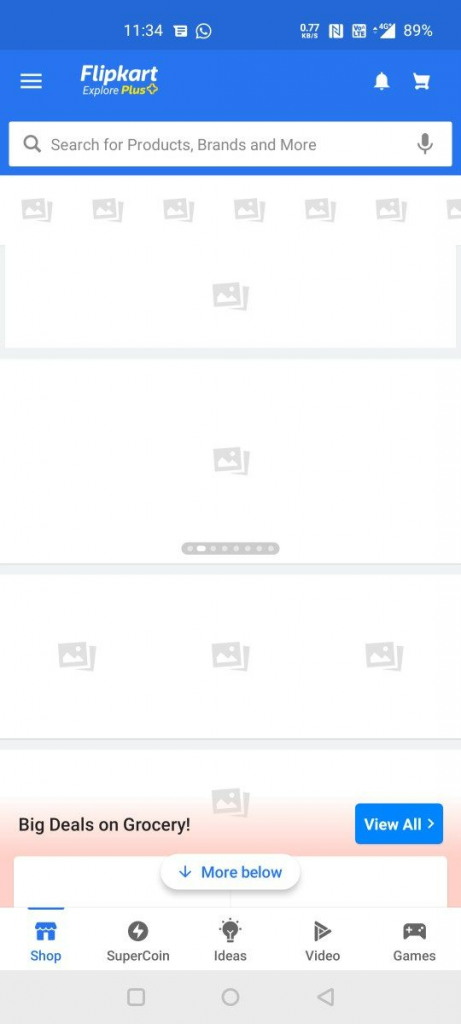In this competitive technological era, industries have bloomed in a way that we now have a vast array of options to pick from whether we need to shop online or use any services. Therefore, it becomes imperative for businesses to monitor users’ changing demands and keep a close watch on how well their website or app is performing.
Web/app loading-related metrics:
Imagine going to a website to avail of a service or to shop online, and the website struggles to load every time you select something, let’s say it’s more than 30 seconds. It disrupts the user’s seamless buying experience and eventually causes them to lose interest in just a few minutes.
Search engines consider factors like page load time, responsiveness, mobile friendliness, etc. when ranking websites. It is necessary to do a complete website analysis and perform a site crawl to comprehend its structure, URL patterns, and template.
Here are a few vital parameters that can help you to do a self-check and understand how easy is your website/app to use for your customers and how you can optimize it for better results.
Largest Colorful Paint (LCP):
LCP denotes a point when the website’s main content is likely loaded in the page load timeline, making it a crucial user-centric statistic for gauging perceived load speed. A fast LCP tells the user that the page is useful. LCP also indicates the render time of the largest picture or text block visible within the viewport. Sites with 2.5 seconds or less LCP have a good user experience.
First Contentful Paint (FCP) –
FCP is the time taken by the app or website to load the largest and first contentful page. It calculates the duration from when the page begins to load to the time when any page’s content is displayed on the screen.
For this metric, “content” refers to text, images (including background images), <svg> elements, or non-white <canvas> elements.
| FCP Time | Color Coding |
| 0-1.8 | Green(Fast) |
| 1.8 – 3 | Yellow (Moderate) |
| Over 3 | Red (Slow) |
Total Blocking Time (TBT) – The time interval between FCP and TTI
TBT calculates the total period of time that a website has been blocked from responding to user input. When a task takes more than 50 milliseconds (ms) (which is known as long task) to complete on the main thread, the main thread gets blocked and the browser cannot stop an ongoing task. Therefore, if a user does interact with the page in the middle of a long task, the browser will have to wait until the task is finished before responding. The user is likely to notice the delay and consider the page to be unresponsive. Ex: When a video ad pops up.
Total Time to Interactive (TTI) – Time taken by the website/app to get ready to collect inputs from the user (Username, password, etc).
TTI estimates the amount of time it takes for a page to load from the time it first loads until its primary sub-resources have loaded.
Techniques like server-side rendering (SSR) may result in situations where a page appears interactive (that is, links and buttons are visible on the screen) but it’s not interactive as the main thread is blocked or the JavaScript code controlling those elements hasn’t been loaded.
Cumulative Layout Shift (CLS)
A webpage’s CLS tells you how much it suddenly shifts throughout the course of its existence. A high CLS score is achieved if a website visitor viewed a page and, as they were reading it, the banner loads and the page jumps down.
CLS is a component of Google’s Core Web Vitals, along with Largest Contentful Paint and First Input Delay (how long it takes for a website to be interactive or “clickable”). Each page that Google web crawlers index has a CLS measurement.
Tips to optimize your website’s load time:
- Anticipate your user traffic
Predict when there might be a spike and how much can be the maximum traffic you can expect – for instance, days like sales, special offers, etc.
- Understand and study the Consumer behavior
Narrow down and find out what are the user patterns – peak traffic achieved during which time intervals, which is the most visited section, and how much time a user spends on the website or app. Ensure the most visited sections perform well always and be extra cautious during peak times.
- Ask and ask always
Product/ Service feedback is pivotal when planning where to optimize and how to achieve the best results for user engagement, satisfaction, and retention. Surveys are an evergreen and classic way to do a self-assessment.
- Keep track and scale up when needed
Track the above-mentioned data from time to time, document it, and do a detailed data analysis. Do a regular check and scale up as your user base increases. Remember, the performance of a website might be good for thousands of users but might need to improve when the user base expands to a lakh.
- Competitive Analysis
Take inspiration from competitors in your field. Study how many users they have, how seamless their site features are, and how time efficient they are.
- Introduce new features to save the users time like image optimization, and optimizing your Javascript codes which will help you to improve the user experience.
To engage your users for a longer time, always save their time and effort :)
We’ll discuss web optimization techniques in the next blog. Stay Tuned!
Further reading: Why Web Optimization is a Must for Businesses?
Knowledge thats worth delivered in your inbox






